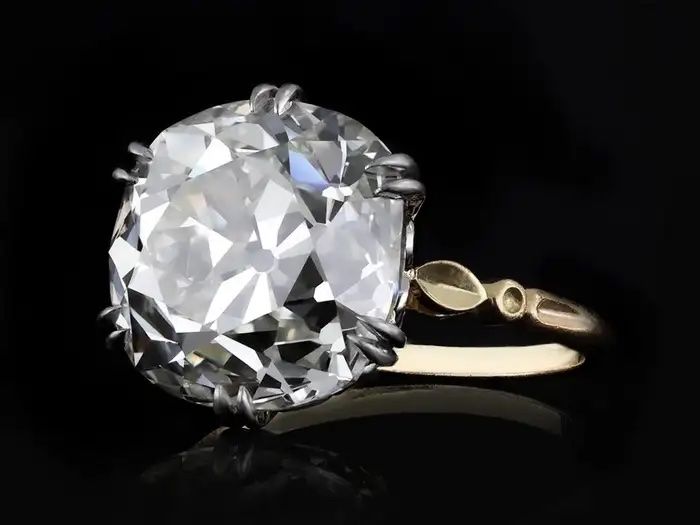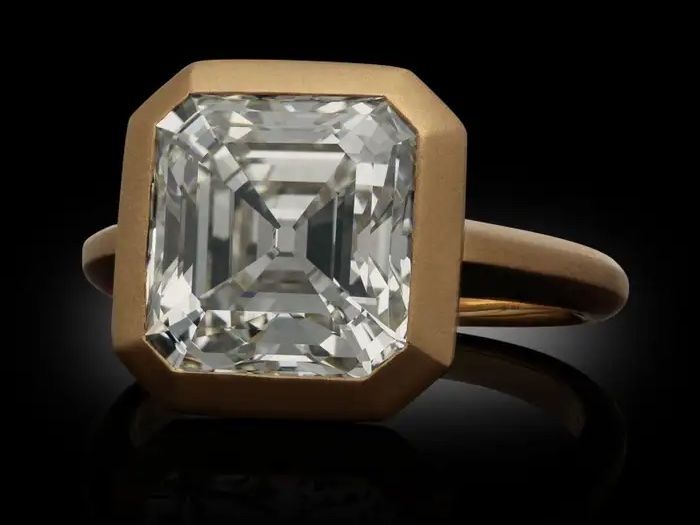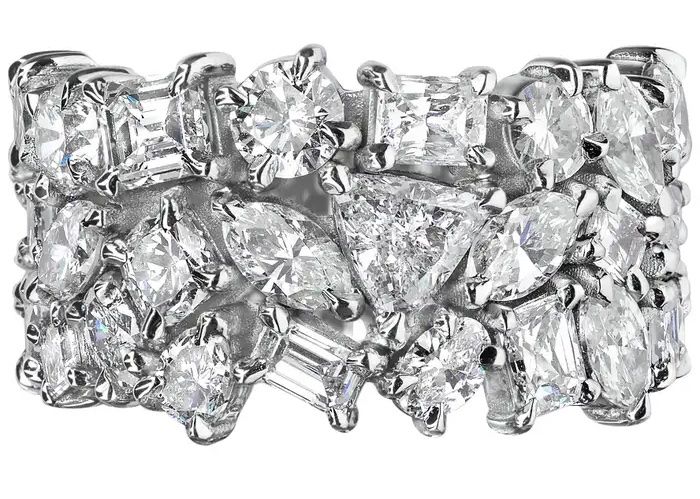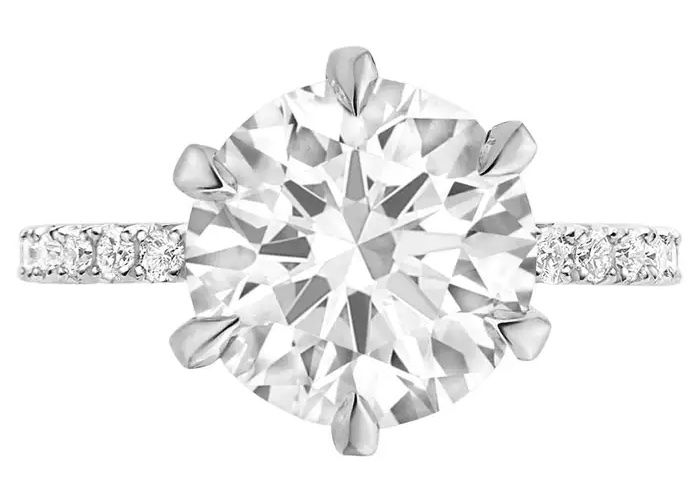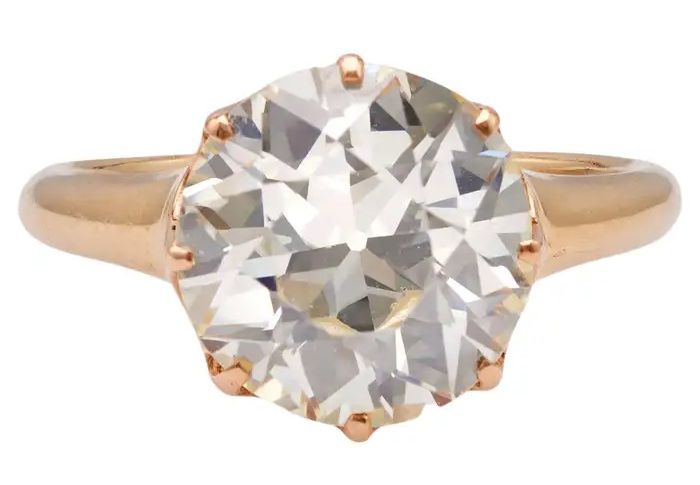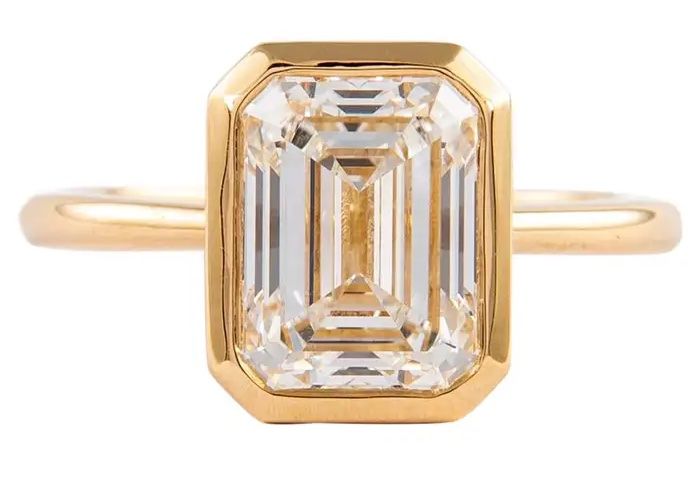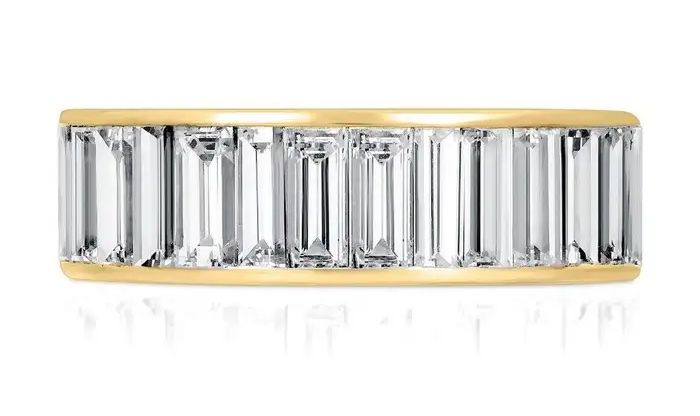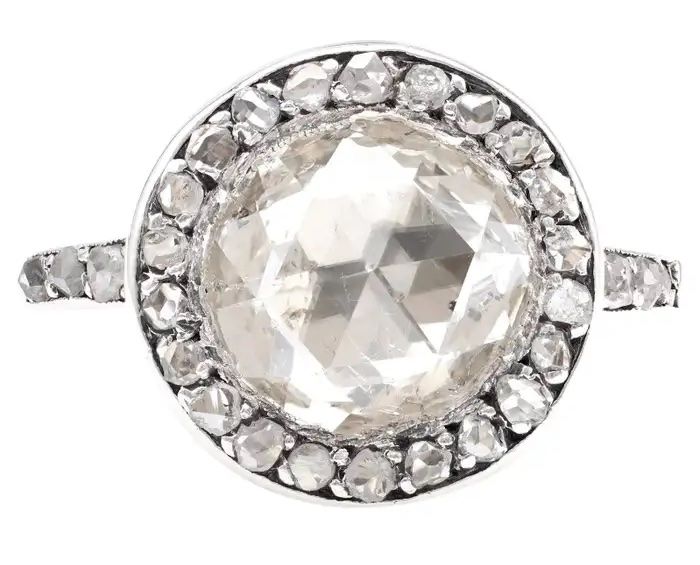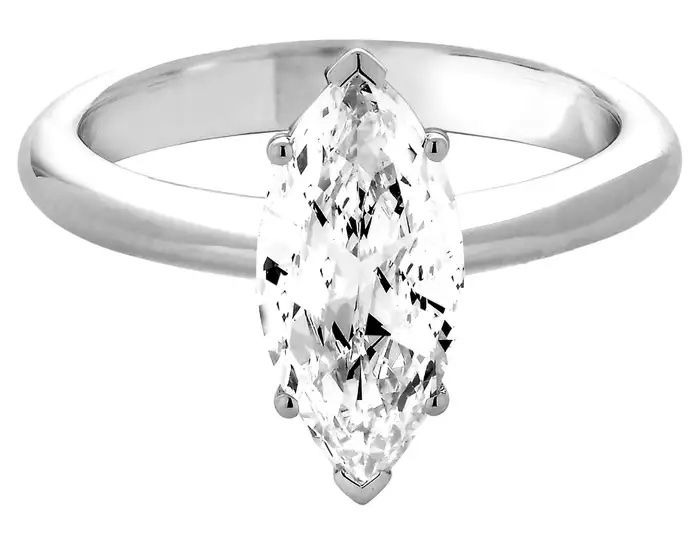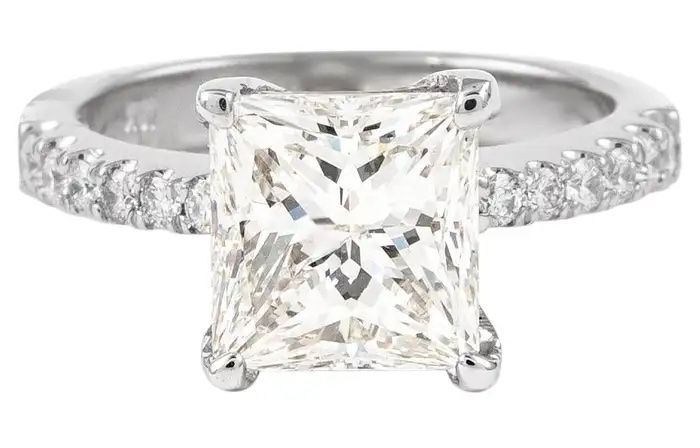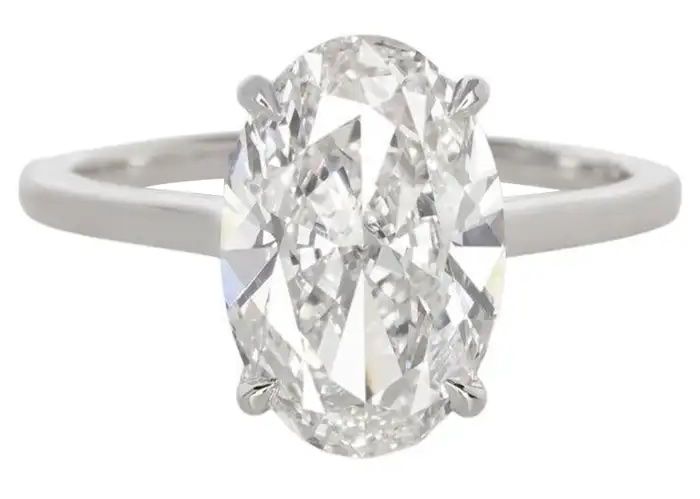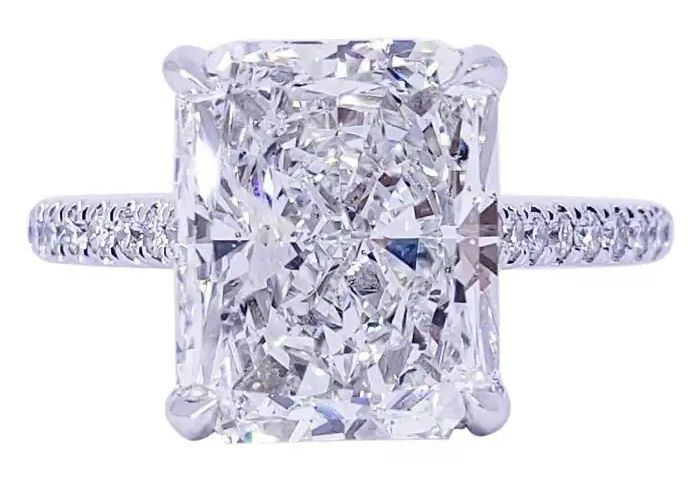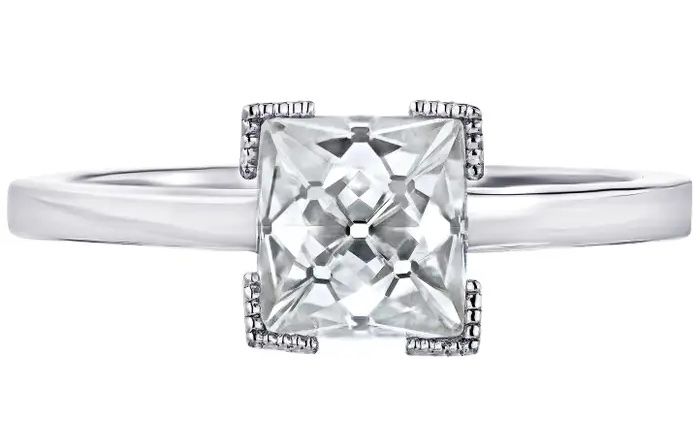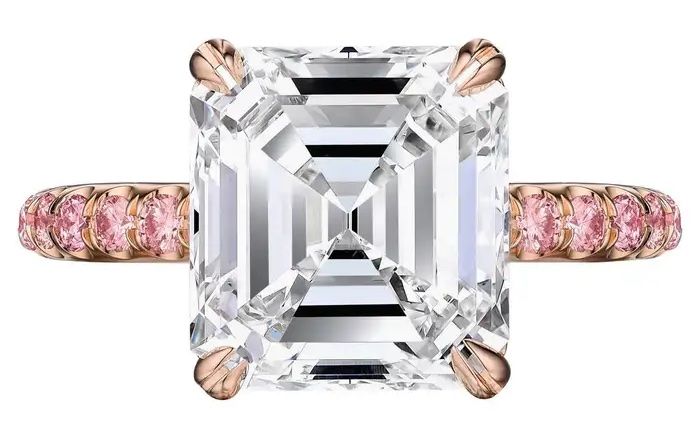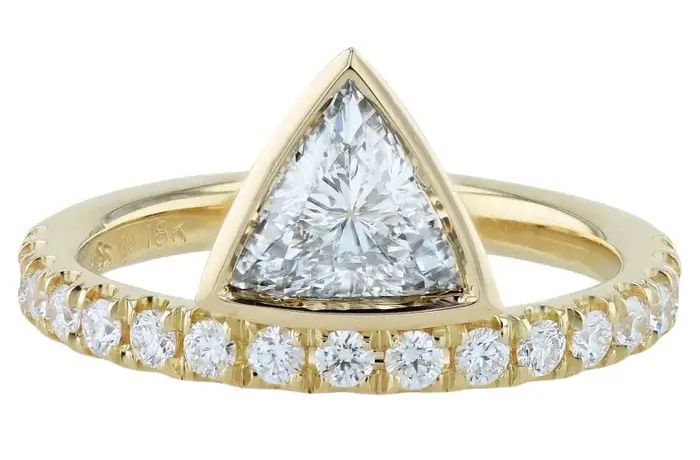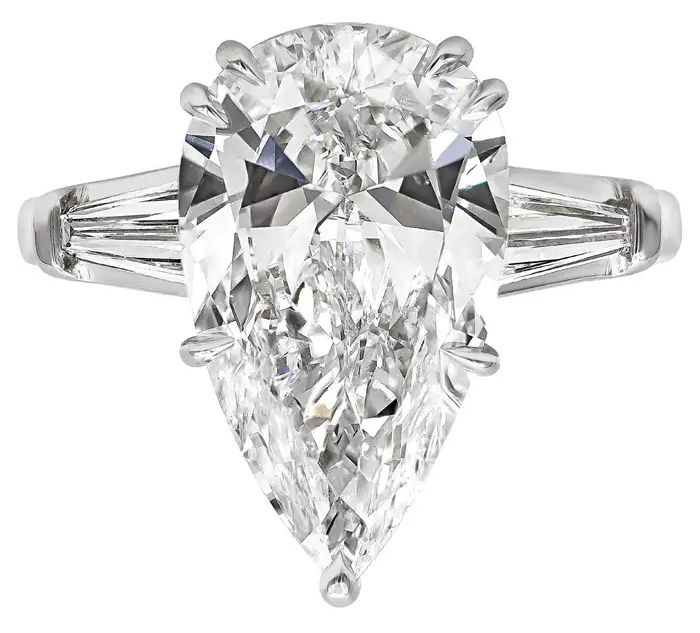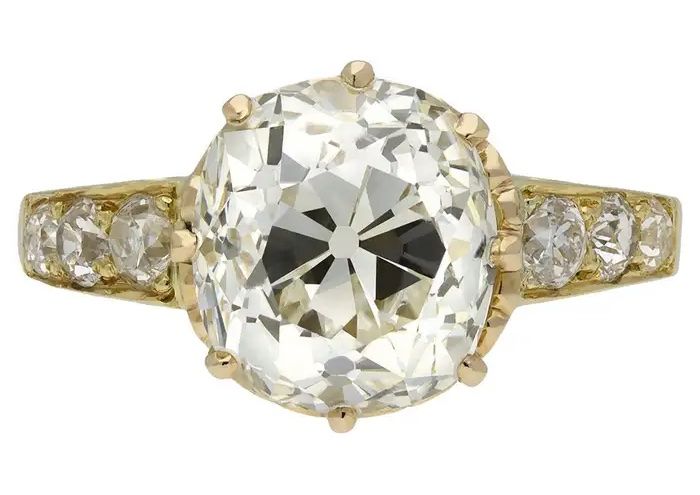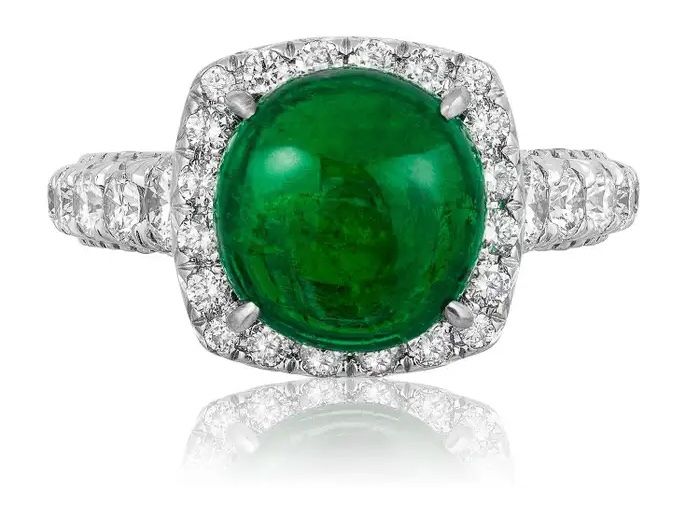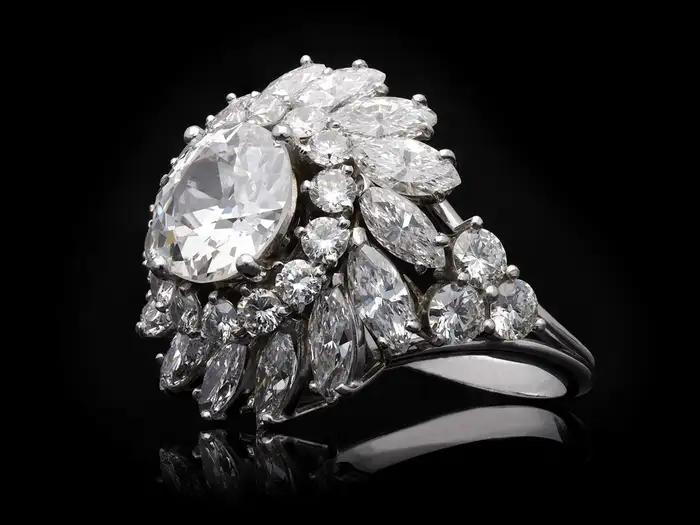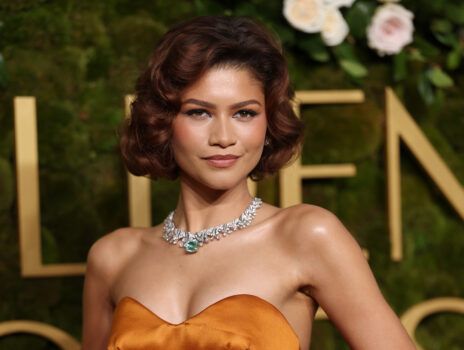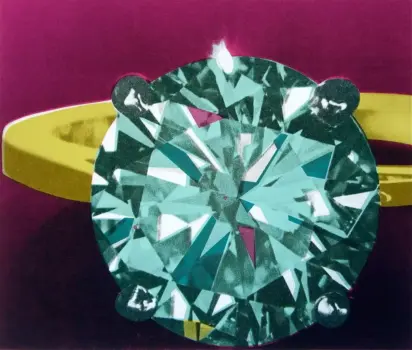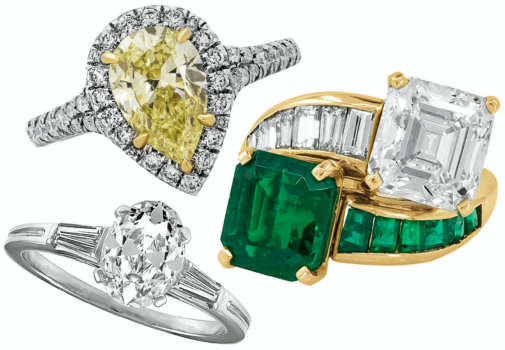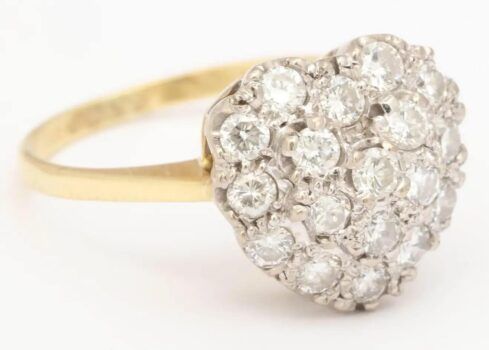Gemstones are front and center when it comes to fine jewelry. But do you know the history, fads or workmanship behind your favorite shapes? Below, we define the three basic facet styles. Then, we break down 15 specific gemstone cuts and show you how the stones look in real rings alongside handy diagrams of their silhouettes.
Basic Gemstone-Cut Styles
While there are many different gemstone cuts, they fall into three main categories: brilliant, step and mixed. These three styles encompass most gem cuts, so they’re important to know. We’ll show you an example of each below.
Brilliant Cuts
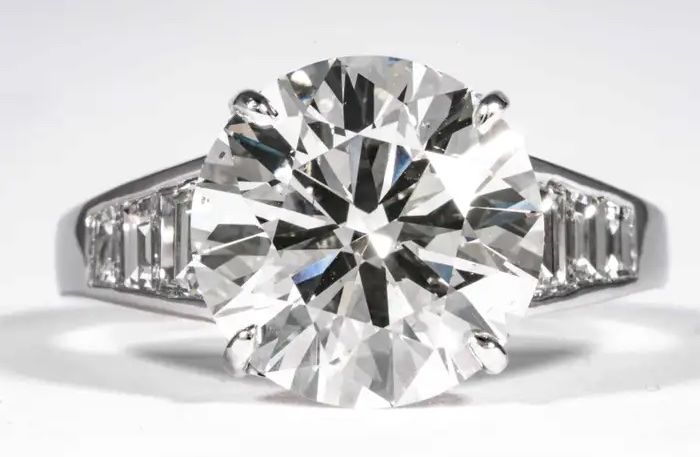
Designed to maximize light, the brilliant cut has many facets. These triangular and kite-shaped facets spread out from the center of the gem, which is cone-shaped. Beloved for the sparkle from its 58 facets, the round brilliant cut is one of the most popular and expensive of all gem cuts.
Step Cuts
A step-cut style includes rows of rectangular facets that climb up the sides of the crown (or top) of the gem. This type of cut is ideal for showing off a gemstone’s color. Two popular step cuts are the emerald cut and the baguette cut.
Mixed Cuts
Mixed cuts are combinations of brilliant and step cuts. They include both brilliant and step facet arrangements, but the placement of the facets will vary.
Types of Gemstone Cuts
To help you identify your favorite style, we’ve compiled a gemstone cuts chart. Keep scrolling to read more about each cut.
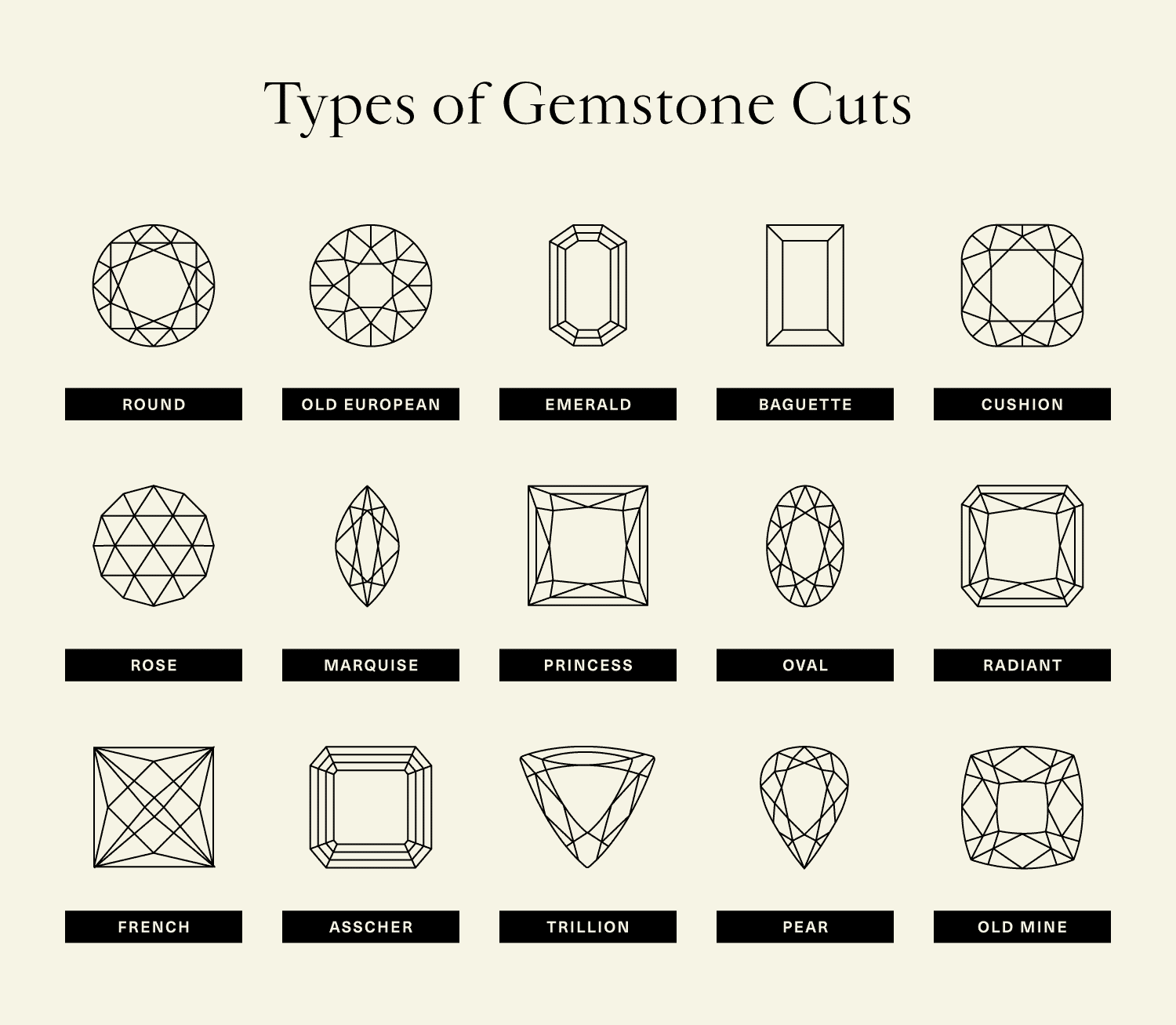
1. Round
The round brilliant cut is the most classic of all stone cuts. Circular with 58 facets, the stone is cut to maximize its brilliance. Anything that is not a round cut is called fancy cut. Round brilliant stones have been popular since the early 1900s.
2. Old European
The old European cut is a precursor to the modern round brilliant cut. The stone appears circular when looked at from the top (because of its low table or largest facet) and has a high crown (the part above the middle of the stone) with larger facets. The tip of the stone, or the culet, is flat instead of pointed. This style was used predominantly in the 19th century, hence the name.
3. Emerald
The emerald cut comprises 58 facets and truncated corners on a rectangular step-cut stone. The flat pavilion of an emerald-cut diamond can magnify the stone’s imperfections, so the gem’s clarity is key. Initially a popular cut for emeralds only, it is now used on other precious stones, but the name has come to define the style. The emerald cut became popular during the Art Deco period.
4. Baguette
Named after the French bread due to its elongated and slender shape, these rectangular, step-cut stones are used to accentuate larger, central stones. Popular during the Art Deco period, the baguette cut is again in fashion, particularly in Deco-inspired rings.
5. Cushion
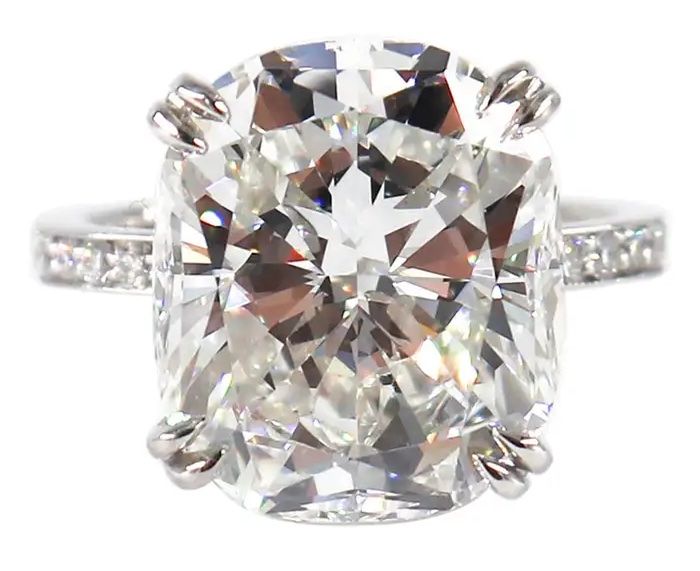
The cushion cut is often referred to as a pillow cut due to its square or rectangular shape with rounded edges. This stone cut comprises 58 facets, like brilliant stones. The cushion cut has been popular since the 18th century.
6. Rose
Rose-cut diamonds are uncommon in modern jewelry and are often associated with antique styles like Victorian or Georgian. The rose cut is circular like its namesake flower, with a flat top and a domed crown with either 12 or 24 facets. This cut dates back to the 16th century.
7. Marquise
Also known as the navette cut (meaning “little boat” or “sailboat” in French), marquise-cut stones are easy to identify due to their elliptical shape that is tapered on both ends. Stones with a marquise cut are considered modified brilliant because they have 58 facets.
8. Princess
A square, modified brilliant-cut stone with pointed corners, the princess cut is a variation on the round brilliant stone and came into fashion in the 1960s. This cut has maximum brilliance and, therefore, it is one of the most popular choices for engagement rings. Also, because of the square shape, more of the original gem is preserved, so there is less waste.
9. Oval
The oval cut was created in the 1960s. It is a variation on the round brilliant cut with the same number of facets: 58.
10. Radiant
The radiant cut was invented in the 1970s by Henry Grossbard, a master diamond cutter. Distinct for its trimmed corners and square or rectangular shape, it is often compared to a princess cut because of its unusually high number of facets (60 to 70), which results in greater brilliance and radiance.
11. French
French-cut stones are either square or rectangular and are distinguished by the cross that the facets on the crown make. The cut originated in the 14th century and experienced a resurgence in popularity during the Edwardian period.
12. Asscher
A variation on the emerald style, the Asscher cut is a square step-cut stone. But unlike the rectangular emerald cut, it looks octagonal when viewed from above. The Asscher cut was invented in 1902 by the Royal Asscher Diamond Company, and it became popular during the Art Deco period.
13. Trillion
Trillion-cut stones are triangular, modified brilliant-cut stones with 31 to 50 facets. In jewelry, trillion stones usually flank the center stone and have straight or curved sides. The trillion cut was designed and trademarked by the Henry Meyer Diamond Company of New York in 1962.
14. Pear
The pear cut is a modified brilliant cut with 58 facets and a teardrop shape (round at one end and pointed at the other). Historically, this cut was referred to as pendeloque, and it was the invention of a Flemish stonecutter in the 15th century.
15. Old Mine
Old mine–cut stones, often associated with antique rings, are slightly curved and square shaped. Because these stones were cut prior to the invention of modern faceting, Old Mine-cut stones are never as bright as modern stones.
Non-Faceted Gemstone Cuts
Although faceted gemstones like those listed above are quite popular, non-faceted gems are also in style. For example, cabochons are smoothly polished instead of faceted, and are usually oval-shaped. Many people love cabochons for their simplicity and elegance.
Carved cabochons also make interesting pieces. For example, the cameo gemstone, which features a carved silhouette, has made a resurgence in recent years.
How to Choose a Gemstone Cut
There are many more unique cuts out there, and each cut should accentuate certain gemstone qualities. When shopping for a piece of jewelry, consider whether you want stones to sparkle and gleam or show off their color with clarity. Then, find the cut on the list that enhances the desired feature.
Some things to look out for when shopping for gemstones are extinctions, which are dark spots on the stone, and windows, which are see-through areas created during the cutting process. These spots reduce the brilliance of a gemstone.
Now that you know how to identify different gemstone cuts, you can search for your next dazzling jewel with confidence.
Source: International Gem Society
